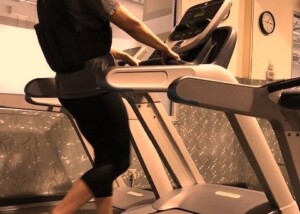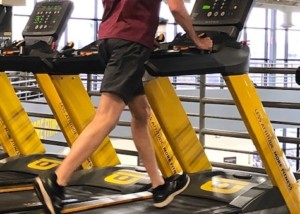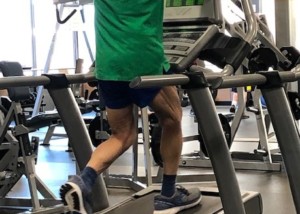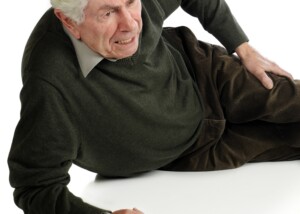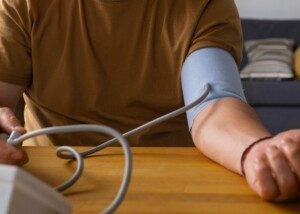LPR vs. Laryngeal Cancer Throat Symptom Comparison

The symptoms of LPR and laryngeal cancer overlap, but an ENT doctor compares these two conditions.
LPR, as anyone who has found this article certainly knows, stands for laryngeal pharyngeal reflux, and the symptoms can range from annoying to very troubling.
These symptoms can also result from laryngeal cancer.
And by sheer coincidence, a person with LPR can develop laryngeal cancer, which is why becoming very familiar with your symptoms of the original laryngeal pharyngeal reflux is extremely important to keep on the lookout for changes in the symptoms or some kind of new evolving problem.
LPR. vs. Laryngeal Cancer
“Symptoms that are persisting and unresolving should always be evaluated by a physician,” begins Dr. Stacey Silvers, MD, of Madison ENT & Facial Plastic Surgery in NYC, who is board certified in otolaryngology.
“If you have a long history of drinking, smoking and/or indigestion and heartburn, then you are at a higher risk for throat and esophageal cancers.
“If you start developing these symptoms later in life, even though LPR is more likely the cause, it is good not to sit on the symptoms but to have them properly evaluated.
“Common things are common. Hoarseness can be from vocal nodules, polyps, reflux and with the appropriate risk factors, laryngeal cancer.
“As we are all human we think of the worst possible diagnosis. Symptoms that are prolonged despite appropriate medical management should also be thoroughly evaluated by an otolaryngologist.
“We all hear the story of the person who had a chronic cough, was diagnosed with allergy, asthma, reflux and ultimately was diagnosed with laryngeal cancer.
“This is extremely rare but is always in a physician’s differential diagnosis.
“It is important not to neglect prolonged symptoms as well as for the clinician to seek out consultants when symptoms persist.”

An NYC expert in ear, nose and throat care, Dr. Silvers has been named among America’s Top Physicians and Surgeons in facial plastic surgery and otolaryngology numerous times since 2003.
 Lorra Garrick has been covering medical, fitness and cybersecurity topics for many years, having written thousands of articles for print magazines and websites, including as a ghostwriter. She’s also a former ACE-certified personal trainer.
Lorra Garrick has been covering medical, fitness and cybersecurity topics for many years, having written thousands of articles for print magazines and websites, including as a ghostwriter. She’s also a former ACE-certified personal trainer.
.
Top image: Shutterstock/cheapbooks
Excessive Saliva when Awakening: Causes, Solutions

A doctor explains what causes excessive saliva buildup when you awaken and how to prevent this.
Excessive saliva when awakening: causes, mechanism behind causes? On
one hand it could be excessive production, but also insufficient swallowing.
“Excessive saliva in the morning with chronic throat clearing are very common complaints,” says Dr. Stacey Silvers, MD, of Madison ENT & Facial Plastic Surgery in NYC, who is board certified in otolaryngology.
“Without other associated symptoms of allergy (runny nose, sneezing, congestion and/or itchy eyes), allergies may not be the cause,” says Dr. Silvers. “These are common symptoms of silent reflux.”
What is silent reflux and how does it cause saliva buildup in the morning when awakening?
“Silent reflux does not present with classic ‘heartburn’ and indigestion,” continues Dr. Silvers.
“Stress is a large contributing factor as well as poor diet and late night eating.
“Eating late at night, one has a belly full of food and excess stomach acid which goes up in the throat while laying down.
“Stress increases stomach acid and some of that excess acid will reflux up.
“The mucous and saliva will drip in the back of the nose and throat to coat the throat and protect the throat from acid that can otherwise burn and cause ulcers.
“The mucous is thick and the need to clear it off the vocal cords can be a fairly constant or an intermittent symptom during the day or upon awaking.”
How to Help Prevent Excess Saliva in the Morning
Dr. Silvers explains, “Avoid late night eating and cut down on highly acidic foods; caffeine, tomatoes, onions, fried foods, nicotine, chocolate and alcohol.
“Elevate the head of the bed to keep acid down in the stomach by gravity alone.
“A trial of an over the counter reflux medication may help.
“If it is not helping or after stopping the medication the symptoms return, consult your doctor.
“Other common silent reflux symptoms include: dry cough, lump in the throat, throat pain, hoarseness and trouble swallowing.”

An NYC expert in ear, nose and throat care, Dr. Silvers has been named among America’s Top Physicians and Surgeons in facial plastic surgery and otolaryngology numerous times since 2003.
 Lorra Garrick has been covering medical, fitness and cybersecurity topics for many years, having written thousands of articles for print magazines and websites, including as a ghostwriter. She’s also a former ACE-certified personal trainer.
Lorra Garrick has been covering medical, fitness and cybersecurity topics for many years, having written thousands of articles for print magazines and websites, including as a ghostwriter. She’s also a former ACE-certified personal trainer.
.
Top image: Shutterstock/Photographee.eu
Why Holding the Treadmill’s Front Bar Is Wrong at Any Age

No matter your age, you’re doing yourself NO favor if you hold onto the treadmill’s front bar when walking.
As a personal trainer, I require all of my clients, including older, poorly conditioned ones, to avoid—yes, avoid—holding onto the treadmill as they do their walking.
Now if they need to hold on for some momentary steadying or to drink some water, that’s fine.
But what I’m referring to here is holding onto the treadmill throughout the duration of the walking session.
The woman pictured above exemplifies a very prevalent scenario in any gym, health club or recreation center where there are treadmills.
The phenomenon of holding on spans all age groups, not just older individuals.
Look at the lady in the photo. Does that appear to be an efficient way to improve one’s walking fitness, aerobic fitness or any kind of fitness?
Why does holding the front bar of a treadmill sabotage the walking workout?
Because natural walking involves a particular movement of the upper body that coordinates with the lower body.
Holding onto the front bar disconnects the upper body with the lower half; it immobilizes it, locks it up.
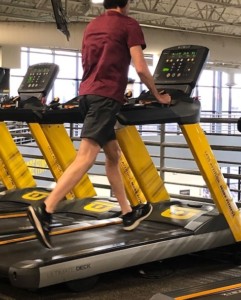
The hips, then, are forced to over-rotate, especially if the tread is set to a fast speed such as 4 mph.
When you’re holding on, “you are going to create more torque of the pelvis which isn’t good for you, says Joel Silbar, a chiropractic physician.
It’s painful just to watch someone’s hips going as they “walk” at 4 mph while clinging to the front bar.
But even if you walk slowly, you’re still getting no bang for your buck, because this fails to mimic actual walking.
Walking on a treadmill without holding on actually has a carryover to real-world walking, even though the ground or floor you walk on isn’t moving under your feet. People train for walk-a-thons by walking (hands off) on a treadmill.
In cold weather I use a high incline to mimic outdoor hikes and trail runs, and believe me, it transfers over because I don’t hold on.
In short, don’t underestimate the effectiveness of a treadmill (hands off) for improving your body’s cardiovascular fitness, knee joint integrity and other elements.
The man in the photo at the top is walking for the photographer, but his position on the treadmill, hands on the front bar, is identical to what you’ll see in every facility that has these machines. People just love to cling onto the front bar.
Even a light hold sabotages the session. Holding onto the front bar mimics using a walker.
For tall people, it makes them hunch forward, which is bad for the spinal column.
Shorter people tend to yank to and fro with each step. Medium height people don’t get off the hook, either; holding fast to the front bar (or lightly) still sours their natural gait.
Holding on anywhere on the machine significantly reduces calories burned.
The calorie display shows the same number whether you’re a man, woman, old, young, skinny, huge, Martian, Vulcan … because the display is determined by the speed of the tread and the incline, NOT the person on the tread. It also removes work from the core, transferring it to the arms! It teaches you how to walk inefficiently, not efficiently.
How to Break Free from Holding onto the Treadmill’s Front Bar
Simply let go, assuming that the machine’s settings are already reasonable. I tell people to “just let go.” They do, and guess what: They don’t fall off. Instead, their posture instantly improves.
They feel more muscles becoming engaged. If someone has the settings crazy high, such as a 15 percent incline and 4 mph, I point out that this is a very unrealistic setting to sustain a walk for, and to knock down the incline or the speed, e.g., if you want to go 4 mph, then bring down the incline to just five percent.
If your low back begins hurting after you’ve let go of the treadmill, this is because all that holding on has de-conditioned your low back, which is supposed to be engaged when you walk.
The solution is to just keep walking WITHOUT holding on to give your low back a chance to catch up and get stronger. The aching will disappear soon enough.
Lorra Garrick is a former personal trainer certified through the American Council on Exercise. At Bally Total Fitness she trained women and men of all ages for fat loss, muscle building, fitness and improved health.
.
Top image: Depositphotos.com
NDE Experiment Suggests NDEs Aren’t Real, But Is Flawed

A scientific explanation of near death experiences is not good news for believers in an afterlife.
On the other hand, does a scientific explanation for “near death experiences” mean there can’t be an afterlife?
Researchers from the University of Michigan Health System believe they are closer to a scientific explanation to the so-called near death experience.
A near death experience is the term for a person’s extraordinarily profound experience following clinical death (heart stops beating, no longer breathing): an experience they report at some point following resuscitation.
Skeptics including some scientists believe these are merely hallucinations or dreams, generated by dying brain cells, or, to put it another way, brain cells as they are being starved of oxygen.
There are some big holes in this theory, which I’ll cover in just a moment.
What have scientists discovered about the near death experience?
The study involved rats. Cardiac death/clinical death was induced in nine rats.
Then the animals were given an electroencephalogram to measure brain activity.
The recorded brain activity in each “dead” rat was characteristic of conscious perception.
“This study, performed in animals, is the first dealing with what happens to the neurophysiological state of the dying brain,” explains Jimo Borjigin, PhD, lead study author.
Dr. Borjigin adds that this study is the foundation for future studies in humans that will investigate cognitive experiences occurring in a dying brain.
Unfortunately, a resuscitated rat can’t report what it experienced during cardiac arrest.
The researchers can only speculate what those patterns of conscious perception meant to the rats.
Within half a minute following the cardiac arrest, the rats showed a widespread, temporary spike of highly synchronized brain activity that had characteristics of a highly aroused brain.
This data, says Dr. Borjigin, confirms signs of conscious activity in the rats’ brains during cardiac arrest.
What was surprising was the high level of this activy, says George Mashour, MD, senior study author. “In fact, at near-death, many known electrical signatures of consciousness exceeded levels found in the waking state,” says Dr. Mashour.
This suggests that the brain can conduct “well-organized electrical activity during the early stage of clinical death.”
Dr. Borjigin notes that this study shows that oxygen depletion during cardiac arrest “can stimulate brain activity characteristic of conscious processing.”
The researches believe that this study provides the first scientific foundation for peoples’ near death experiences.
Loophole in this Study
It’s a gigantic leap to go from a rat’s (or even if it can be shown in humans) EEG patterns during cardiac arrest to the conclusion that a near death experience happens only inside a person’s brain.
Holes in the Theory that Oxygen-Starved Brain Cells Conjure up Vivid Hallucinations
#1. Many who’ve had a near death experience (NDE) have verified sights and sounds that occurred outside the room their body was in, or in some way have provided feedback of perception that could only be explained by an out-of-body experience.
An example, according to Dr. Raymond Moody’s research, is of a woman who was blind since childhood (not birth), who when elderly, had an NDE during resuscitation of her body.
She accurately described who entered and exited the room, their clothes and colors, and the instruments they used.
#2. Skeptics like to point out that during clinical death, a person can still hear.
Their brain then conjures up visual images to “match” what they are hearing.
If the patient hears, “Hand me the scalpel” and then reports later, “I saw the nurse hand the doctor the scalpel,” that’s one thing.
But when the patient hears “double action Rongeur” or “Richardson retractor,” how the heck would the patient be able to accurately describe these instruments (as well as other fine details that are NOT verbalized, such as the hair styles and body builds of the medical team)?
#3. If oxygen-depleted brain cells can produce the most vivid experiences that a patient has ever had, then why doesn’t this phenomenon occur when muscle cells are starved of oxygen?
According to skeptics’ theory, a marathon runner, with two miles left to the marathon, should suddenly be able to explode to the finish line with their fastest sprint, nonstop.
Or, a weight lifter, struggling to complete the tenth repetition of a 225-pound bench press, should then suddenly be able to press twice that amount without a problem!
After all, when cells are starved of oxygen, shouldn’t they then become exceptionally aroused?
#4. People in vegetative states from asphyxiation have brain cells damaged from oxygen depletion. Yet their electroencephalogram readings show no “patterns of consciousness.”
People can’t imagine something they heard or saw outside the room their body was in during a near death experience. Science is a long, long way off (if ever) from explaining NDEs. Of course, we will all find out eventually what really happens!
 Lorra Garrick has been covering medical, fitness and cybersecurity topics for many years, having written thousands of articles for print magazines and websites, including as a ghostwriter. She’s also a former ACE-certified personal trainer.
Lorra Garrick has been covering medical, fitness and cybersecurity topics for many years, having written thousands of articles for print magazines and websites, including as a ghostwriter. She’s also a former ACE-certified personal trainer.
.
Top image: ©Lorra Garrick
Sources: .sciencedaily.com/releases/2013/08/130812153553.htm; www.near-death.com/experiences/evidence02.html
Running on a Treadmill: Hands On vs. Hands Off
Find out just how big a difference there is between jogging on a treadmill while holding on vs. hands off.
If you’ve been holding onto the treadmill while jogging, you’ve hardly done anything to make yourself a better runner outside, on the court or in the field.
Just because there’s a place to put your hands on the treadmill doesn’t mean you should do this when running on it.
When you run or jog outside, on the street, in a park, an athletic field or on a basketball court, your upper body moves completely differently than how it’s positioned if you’re holding onto a treadmill.
When you hold onto a treadmill while jogging, your upper body is locked in place, moving minimally.
If you were to run outside or anywhere other than on a machine, your upper body would be fully engaged.
This is the way you should run: the upper body moving in synch with the lower body, in unison, arms swinging.
This natural motion is completely tossed when you hold onto a treadmill—even if you’re in poor physical condition, overweight, older, what-have-you.
Holding the Front Bar while Jogging Makes You Lean Forward
Some runners who hold onto a treadmill lean INTO the machine when their hands are on the front bar.
However, holding onto the side bar doesn’t make things right, either.
Even if you’re a slow jogger, you simply should not hold on. Your arms are supposed to swing gently at your sides. Even toddlers, when “running,” know this basic rule of the human body.
By holding onto the bar in front, you’ll remove workload from your core.
Yes, the core works when you run or jog naturally without clinging onto anything for support.
If you’ve seen fit-looking people holding onto a treadmill while doing their make-believe running, don’t think for a second that this externally supported movement contributes to their nice physique.
A person can get a good body by strength training alone, coupled with a smart diet.
And again, holding onto the side of the machine isn’t any better. The body’s natural movement patterns still get disrupted.
“Holding on may giver joggers a sense of ‘more intensity,’ but it actually results in a less effective workout,” says John Whyte, MD, board certified internist in Washington, DC, and author of “Is This Normal? The Essential Guide to Middle Age and Beyond.”
If you’re up to jogging on a treadmill but feel out of shape, you will do yourself a giant disservice by holding on.
Instead, start out slowly with baby steps. Go 3.5 mph or even slower, zero incline.
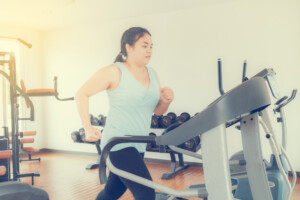
Shutterstock/MikeBiTa
If your feet or some other area begins hurting or aching, then walk for a while.
But do not hold onto the treadmill when running.
This is a terrible habit. Even if you get dizzy, do not hold on.
Just go slower, hands free, arms swinging naturally, and give your body a chance to acclimate and adjust.

Dr. Whyte is the chief medical officer of webmd.com. Prior, he was the chief medical expert for almost a decade at Discovery Channel.
 Lorra Garrick is a former personal trainer certified through the American Council on Exercise. At Bally Total Fitness she trained women and men of all ages for fat loss, muscle building, fitness and improved health.
Lorra Garrick is a former personal trainer certified through the American Council on Exercise. At Bally Total Fitness she trained women and men of all ages for fat loss, muscle building, fitness and improved health.
.
Top image: Depositphotos.com
Birth Control Pills Cause Blood Clots in High Risk Women

How long after taking birth control pills might a blood clot form in high risk women like smokers?
Blood clots are possible complications of using birth control pills, especially for women at higher risk for blood clots; namely women who smoke, and women over age 35.
However, is there an answer to this question: How soon after taking birth control pills on a regular basis, can a blood clot develop in women at high risk?
“A blood clot can form anytime while on birth control in any patient,” says Dr. Corinne Bazella, OB/GYN with University Hospitals Case Medical Center.
However, it happens more often in the first years of use. Blood clots form in the deep veins of the legs, and can travel to the lungs through the circulation, causing a life threatening condition called a pulmonary embolism.”
This kind of blood clot also goes by the name deep vein thrombosis, or DVT, and a woman on birth control increases the baseline risk of blood clots with birth control if she has any one of numerous risk factors.
Dr. Bazella lists the following additional risk factors for blood clots in women on birth control, but also for people in general:
- Inherited clotting disorders
- surgery
- prolonged immobility (especially in cramped quarters such as on airplanes
- inertia from excessive desk work or bed rest
- trauma
- obesity
- smoking. If you’re a woman over age 35 who smokes, this puts you at considerable risk for blood clots while taking birth control pills that contain estrogen; avoid estrogen-containing birth control pills.
Ironically, a woman is much more likely to develop a blood clot while pregnant, than while on birth control pills.
Dr. Bazella explains, “In healthy nonsmoking women who are on combination low dose birth control pills, the risk of getting a blood clot is 12-20 women in 100,000.
“This risk greatly increases with pregnancy and is as high as 48-60 women in 100,000.
“Therefore, the risk of birth control pills causing a blood clot is less than the risk of getting a blood clot while pregnant, which is what you are trying to prevent!”
 Dr. Bazella’s expertise includes abnormal uterine bleeding, adolescent gynecology, contraception and menopausal care.
Dr. Bazella’s expertise includes abnormal uterine bleeding, adolescent gynecology, contraception and menopausal care.
 Lorra Garrick has been covering medical, fitness and cybersecurity topics for many years, having written thousands of articles for print magazines and websites, including as a ghostwriter. She’s also a former ACE-certified personal trainer.
Lorra Garrick has been covering medical, fitness and cybersecurity topics for many years, having written thousands of articles for print magazines and websites, including as a ghostwriter. She’s also a former ACE-certified personal trainer.
.
Top image: ©Lorra Garrick
Sore Throat from Exercise: Causes & Solutions

An ear, nose and throat doctor explains why exercise such as running can cause a sore throat and how to solve this problem.
Stacey Silvers, MD, first points out that a sore throat from exercising has two main causes: nasal obstruction and acid reflux.
“Poor flow of air through the nose makes it harder to oxygenate especially during a workout,” says Dr. Silvers, of Madison ENT & Facial Plastic Surgery in NYC, who is board certified in otolaryngology; one of her specialties is sinus surgery.
“We are inclined to open our mouths to breathe better. This, however, can make the throat dry, and for some people the throat can get sore, as the dry air can be irritating.
“The mouth is meant to eat through and talk through. We are obligated nose breathers and our nose is our air filter and air moisturizer.
“The causes of nasal obstruction are congestion and a deviated septum.
“Most of us have an element of both and some more extreme than others.”
What can be done about a sore throat caused by exercise?
“In most cases conservative medical management like saline nasal washes and nasal steroid sprays can improve nasal breathing,” says Dr. Silvers.
“If not, then some are candidates for a simple surgical option to open the nasal airway.”
Many people have acid reflux and are not aware of it.
Silent reflux can cause chronic sore throats, hoarseness and clearing of the throat.
Working out soon before you digest your food can allow acid into the back of the throat as you jump around, and cause pain in the throat.
“Many of us make thick protective mucous to coat the throat and protect from the acid, but some of us don’t have enough, and throat soreness is a result.
“Try waiting three hours after eating for your workout and cut down on highly acidic foods.
“If this is not enough you can try an OTC reflux pill one hour prior to exercise.”
If you continue to experience a sore throat that seems to be caused by exercising, despite implementing these measures, than see an ear, nose and throat physician.

An NYC expert in ear, nose and throat care, Dr. Silvers has been named among America’s Top Physicians and Surgeons in facial plastic surgery and otolaryngology numerous times since 2003.
 Lorra Garrick has been covering medical, fitness and cybersecurity topics for many years, having written thousands of articles for print magazines and websites, including as a ghostwriter. She’s also a former ACE-certified personal trainer.
Lorra Garrick has been covering medical, fitness and cybersecurity topics for many years, having written thousands of articles for print magazines and websites, including as a ghostwriter. She’s also a former ACE-certified personal trainer.
.
Top image: ©Lorra Garrick
When I Swallow There Are Clicking Noises: Help!

An ear, nose and throat doctor explains the causes of clicking sounds when you swallow and what can be done about this.
“Many people experience clicking in the ear when they swallow or chew,” says Dr. Stacey Silvers, MD, of Madison ENT & Facial Plastic Surgery in NYC, who is board certified in otolaryngology; one of her specialties is sinus surgery.
“The two main causes of this are the Eustachian tube and the temporal mandibular joint (TMJ).
“The Eustachian tube allows the middle ear to ‘breathe’ and function at the same atmospheric pressure that is in our environment.
“This tube ventilates the middle ear space and opens into the back of the nose.
“The act of breathing through the nose will allow air into the middle ear space through the Eustachian tube.
“This Eustachian tube opens and closes as needed to allow the correct pressure in the ears.
“The act of swallowing and chewing will help open this tube, as the palatal muscles are attached to the Eustachian tube.
“This is why chewing and swallowing are natural for us when we are landing on an airplane and the ears feel pain or pressure and we want them to pop.”
So what can cause the clicking noises when we swallow?
“If the mucous is thick that lines the Eustachian tube, associated with allergy or dehydration, then the tube can be sticky, not allowing good ventilation, and an appreciation of a sound when the tube opens and closes,” explains Dr. Silvers.
Solution for clicking noises when swallowing?
“Decongestants and proper hydration are usually the best treatment options for this.

Shutterstock/Phovoir
“Some people have a patulous Eustachian tube and the tube simply functions poorly.
“Clicking can also be the bones rubbing in the TMJ joint. Some people have TMJ pain while others just experience the noises as the joint can rub with jaw movements.
“This is similar to a clicking in the knee when walking. You may want to visit a TMJ specialist and consider jaw strengthening exercises.”
Pay attention to how you bite into very hard food.
A bout of clicking sounds can be triggered from repeatedly biting into hard blocks of chocolate, for instance, straining the TM joint.

An NYC expert in ear, nose and throat care, Dr. Silvers has been named among America’s Top Physicians and Surgeons in facial plastic surgery and otolaryngology numerous times since 2003.
 Lorra Garrick has been covering medical, fitness and cybersecurity topics for many years, having written thousands of articles for print magazines and websites, including as a ghostwriter. She’s also a former ACE-certified personal trainer.
Lorra Garrick has been covering medical, fitness and cybersecurity topics for many years, having written thousands of articles for print magazines and websites, including as a ghostwriter. She’s also a former ACE-certified personal trainer.
.
Top image: ©Lorra Garrick
Trouble Swallowing, Thick Mucus in Back of Throat: Causes, Solutions
Holding on Treadmill Side Rails while Running: Bad Idea
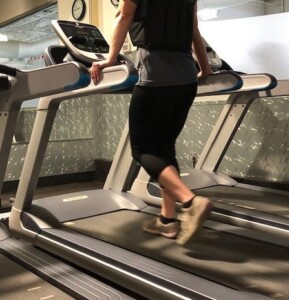
Putting your hands on the side rails of a treadmill while running or jogging will sabotage your efforts and waste your time.
If you hold onto the side rails of the treadmill while doing your running, you’ll want to seriously rethink this bad habit.
When I was a personal trainer people would tell me they need to hold on “for balance” or to “keep from falling off.”
One man, around 60, told me he did it to keep steady. The irony was that he’d set the speed at 6 mph!
This is pretty fast for someone who feels unsteady!
He’d been going to the gym for years, holding onto the treadmill’s side rails and “running” 6 mph – and during that entire time, his body remained the same chubby form.
If this sounds like you—locked in the same state, same body weight—despite months or years of running on a treadmill—and you’ve been holding onto the side rails (or the front bar, or the console), then here’s what you should do:
LET GO. If you think you’ll fly off, this means that the speed you’ve been using is way too fast.
“Holding the rails while running on the treadmill actually affects the natural running posture and alignment,” says D’Wan Carpenter, DO, a board certified physical medicine and rehabilitation physician with SIMEDHealth in FLA.
“It decreases efficiency of the body due to the lax posture allowing the core abdominal and back muscles to relax.
“This change in the natural alignment can also cause increased stress on other areas, and particularly places much of the body weight on the upper extremities, which are not designed to be able to effectively support the whole body.”
How to Solve the Unsteadiness Problem
The chubby man was afraid of losing his footing. I told him, “Set the speed at 4 mph and tell me if you feel unsteady.”
He began jogging, without holding on, at 4 mph, and was able to keep his balance just fine.
He also felt that he was getting a better aerobic workout than he had been getting at 6 mph and holding onto the rails.
Look at the woman in the photo above. Does this in any way simulate outdoor jogging?
Even a light handhold on the rails will compromise effectiveness. The type of hold doesn’t matter — be it palms only; wrapping the fingers around the rail; pressing only the fingers to the rail; bent arms; straight arms — this will create a fake jogging experience that will hold you back from progress.
When a person runs or jogs naturally, arms swinging, their core (the soft structures of the low back and abdominal region) works to coordinate the movement between the lower and upper body.
You may not feel this core engagement, but it’s there. That’s why competitive sprinters and even longer-distance specialists (400m, 800m, even 1,500m) have great abs!
Nobody rocks a six-pack like a sprinter! Think that’s from thousands of crunches? Think again. It’s from running! Note the abs of soccer players or any athlete who does a lot of running.
When you hold onto the side rails (or anywhere else) of a treadmill while running…you cancel out abdominal and low back engagement, plus short-change leg involvement.

What in the heck kind of jogging form is THIS? Don’t say it’s better than a sofa workout. If you have to compare this deranged form to sitting on a sofa in order to validate it, then you just made a comparison to an extremely low standard!
The abs and low back get a free ride when you hold on. If you’ve been jogging 5, 6 or 7 mph on a treadmill and holding on…and doing no outside running…and then one day you go outside to do some running…the fatigue will begin biting at you very quickly because your body won’t be used to running without holding onto anything for support.
What makes this habit even worse is when someone presses UP on the side rails while running. This literally subtracts body weight off the tread.
I’ve witnessed this to the extreme: an “air jog.” What are people thinking when they do this?
Their arms are locked straight, shoulders scrunched up, as they keep their feet partially lifted off the tread as they air jog.
“Holding the rails also decreases the amount of weight bearing and reduces the number of calories burned during the exercise,” says Dr. Carpenter.
The calorie readout is generated by the selected speed and incline, regardless of what the user is doing.
Break the Bad Habit of Holding onto the Treadmill’s Side Rails when Running
Set the machine to a slower speed and let go.
See if you truly fly off or topple backwards.
If you’re apprehensive, set the speed to 3 mph and trot it.
Gradually increase the speed as you adjust.
If you normally “run” at 6 mph and say, a 10 percent incline…while holding on…you’ll have to drastically reduce these settings in order to let go.
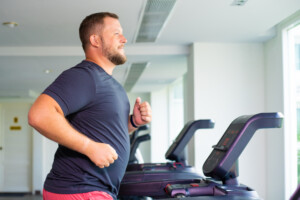
Shutterstock/Den4is
Don’t assume you’ll sacrifice workload by letting go at 2 mph and 10 percent incline or 6 mph and zero incline.
Trust me: A 2 mph trot at 10 percent incline will get your heart going, and you’ll feel your calves working like you’ve never felt before (holding on removes significant workload from the legs).
Experiment with different settings to find a sweet spot range…without holding on.
If dizziness is the issue, again, use a very slow speed at first and swing your arms.
Give your body a chance to overcome the dizziness.
If balance is the issue, again, go slow at first and give your body a chance to acquire better balance.
It will never learn to balance if you hold on.
A person who can deftly run down the street after a loose dog, chase their children in a park or run like the wind in a parking lot after a blowing $50 bill, did not pick up these skills by holding onto a treadmill.
 Dr. Carpenter is one of the nation’s top board-certified physical medicine and rehabilitation physicians, a national speaker, medical legal expert and independent medical examiner. She is founder and Chief Medical Officer of DJC Physical Medicine Consultants. Follow Dr. D’Wan on Twitter.
Dr. Carpenter is one of the nation’s top board-certified physical medicine and rehabilitation physicians, a national speaker, medical legal expert and independent medical examiner. She is founder and Chief Medical Officer of DJC Physical Medicine Consultants. Follow Dr. D’Wan on Twitter.
 Lorra Garrick is a former personal trainer certified through the American Council on Exercise. At Bally Total Fitness she trained women and men of all ages for fat loss, muscle building, fitness and improved health.
Lorra Garrick is a former personal trainer certified through the American Council on Exercise. At Bally Total Fitness she trained women and men of all ages for fat loss, muscle building, fitness and improved health.
Systolic Blood Pressure (Top Number) in Elderly: 150 vs. 140

Does it really make a difference if the systolic blood pressure in the elderly is around 150 vs. a little bit under 140?
The guidelines that systolic blood pressure should be below 140 are based on research that has, historically, targeted non-elderly people.
A report appears in Drugs & Aging, in which Leah Goeres, lead study author, points out that the goal of keeping the systolic blood pressure under 140 has been a longstanding protocol.
“Yet at the same time, there’s been some reservations among some doctors about how important this guideline is…in that, would 149 vs. 139 really make a difference in an elderly person?
“Keeping systolic blood pressure in older adults below 150 is important,” says Goeres in the paper. She says this is a “mild level of control.”
Then she adds that for the person over age 65, “that level is also good enough.”
After extensive analysis, Goeres maintains that more intensive blood pressure management, to keep it under 140, is not necessary for the older adult.
A potential side effect of drugs that lower blood pressure is orthostatic hypotension: Blood pressure quickly drops when someone rises from a chair, and this can cause passing out.
This problem is much more prevalent in people 80-plus.
The report explains that as men and women get older, the evidence becomes thinner that strict control of the systolic should continue to be very important.
Morton Tavel, MD, Clinical Professor Emeritus of Medicine, Indiana University School of Medicine, and author of “Health Tips, Myths and Tricks: A Physician’s Advice,” concurs with the study’s findings.
“As a practical matter, in someone over 70 years of age, I consider a systolic pressure of 150 acceptable.
“Although it is a bit more desirable to go even lower than this in this group, this is difficult to achieve in the elderly without the use of multiple drugs, which increase the likelihood of objectionable side effects.
“So it’s usually best to strike a happy compromise with a less aggressive approach.”

Dr. Tavel’s medical research includes over 125 publications, editorials and book reviews in peer-reviewed national medical journals. He was formerly director of the cardiac rehabilitation program at St. Vincent Hospital in Indiana. mortontavel.com
 Lorra Garrick has been covering medical, fitness and cybersecurity topics for many years, having written thousands of articles for print magazines and websites, including as a ghostwriter. She’s also a former ACE-certified personal trainer.
Lorra Garrick has been covering medical, fitness and cybersecurity topics for many years, having written thousands of articles for print magazines and websites, including as a ghostwriter. She’s also a former ACE-certified personal trainer.
.







